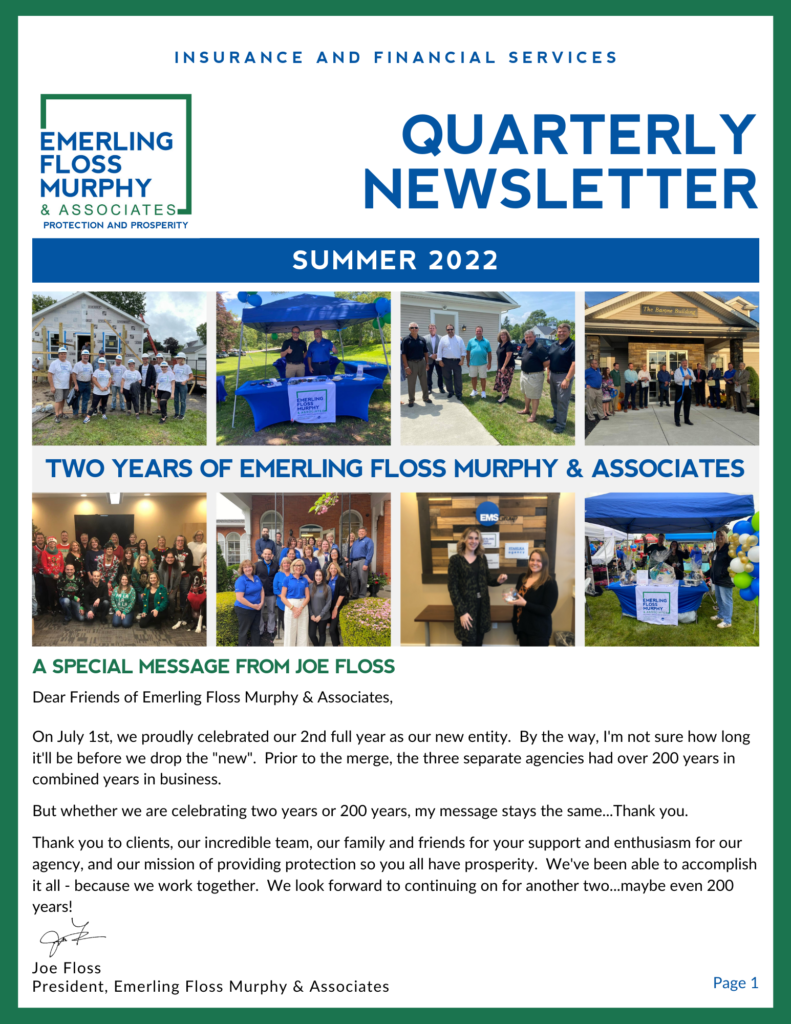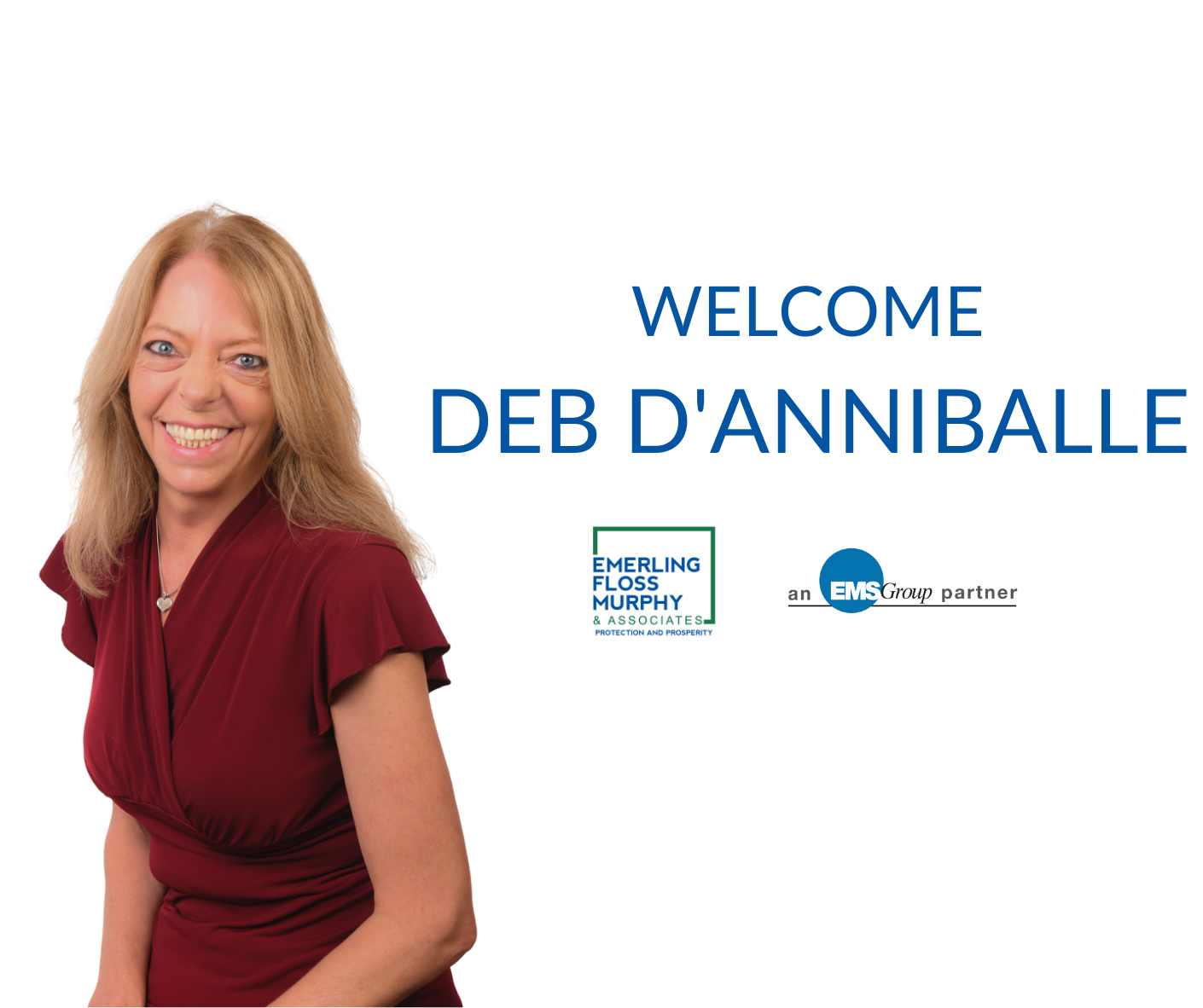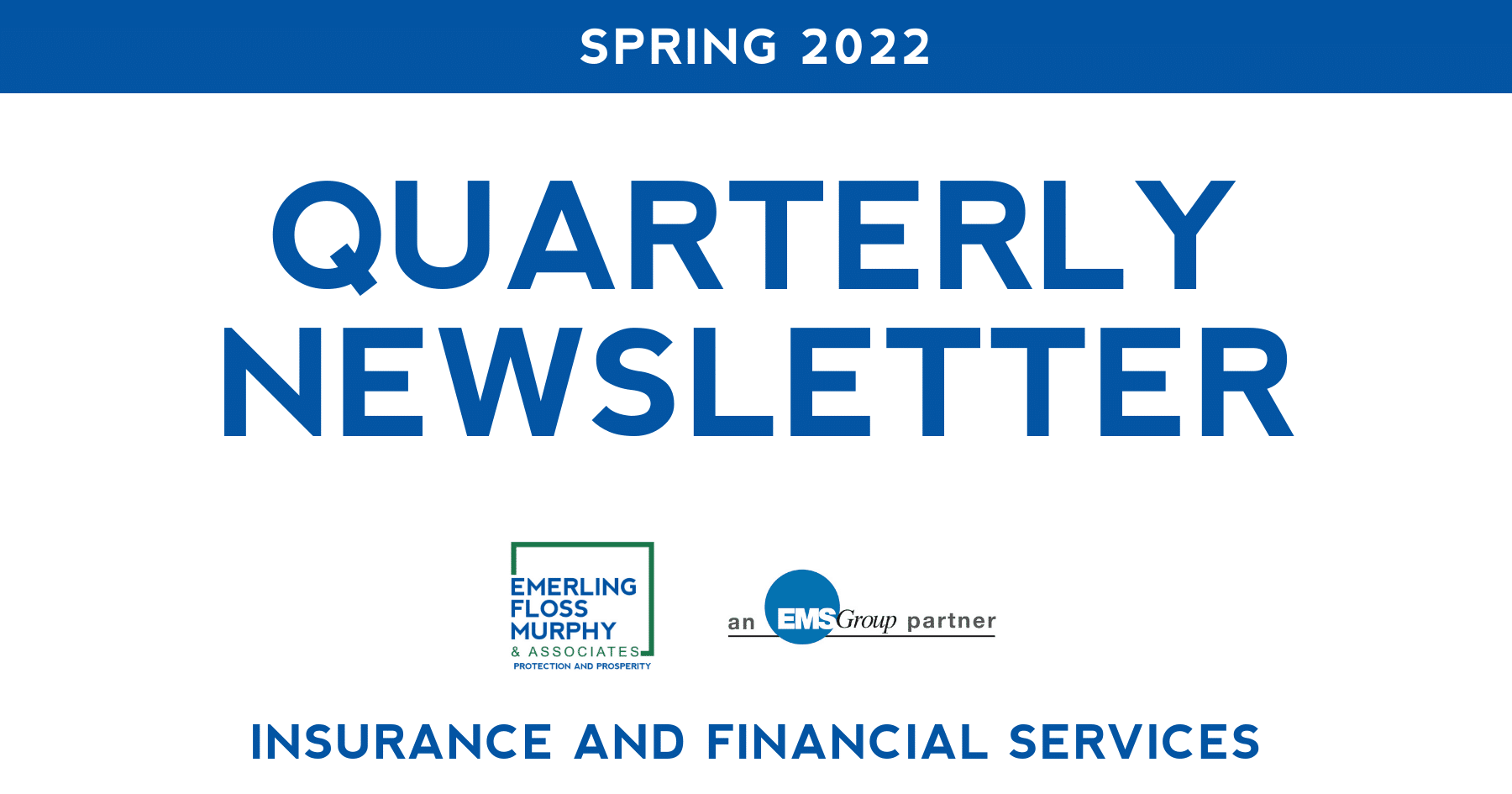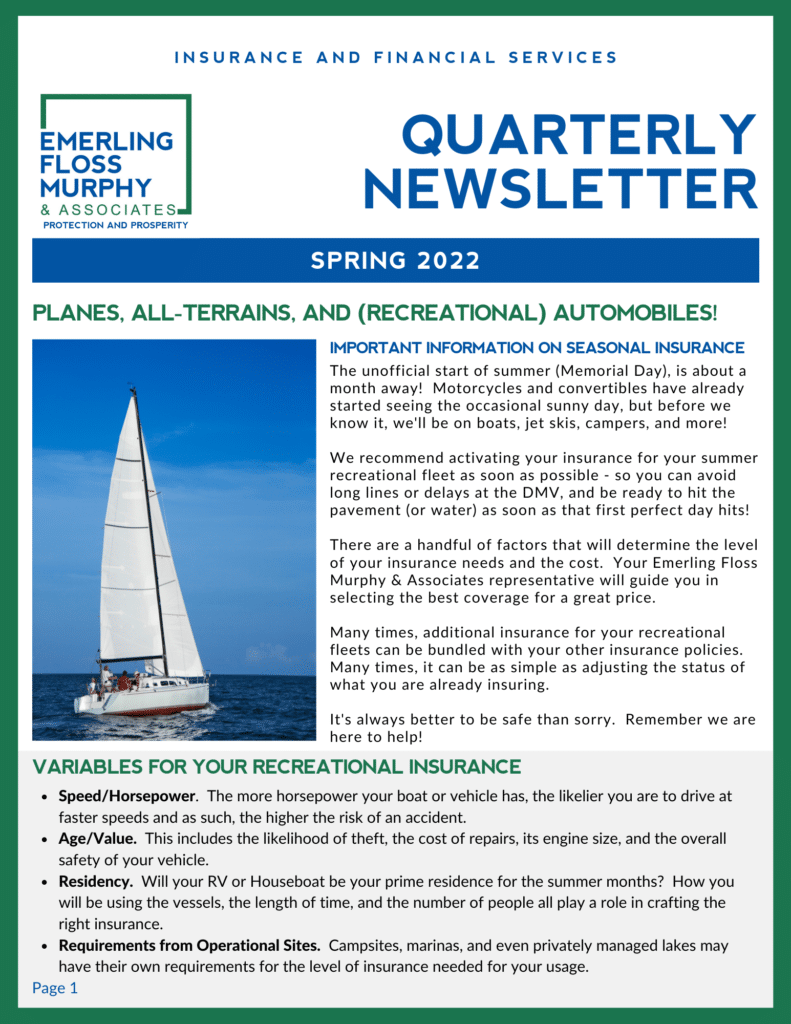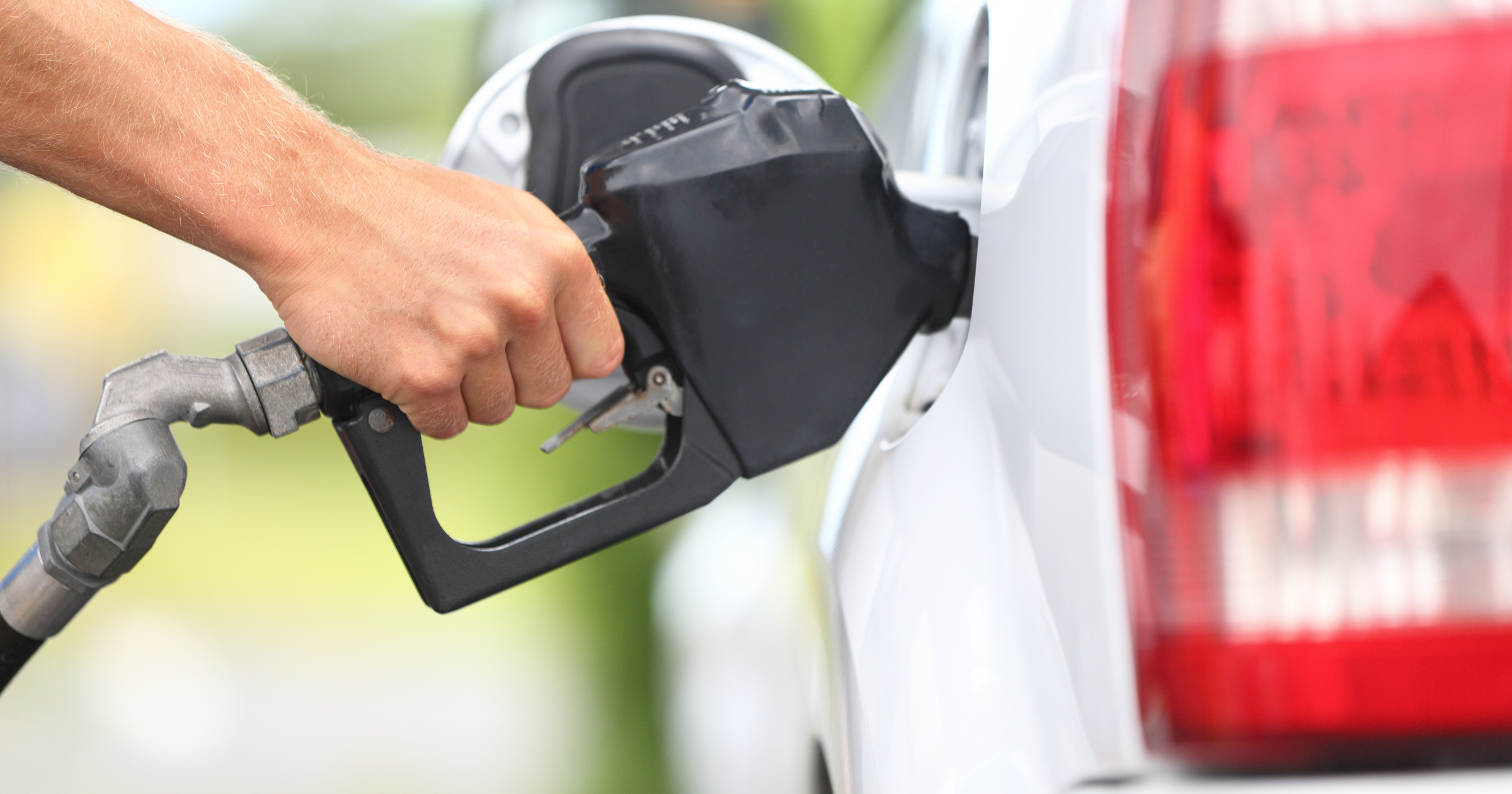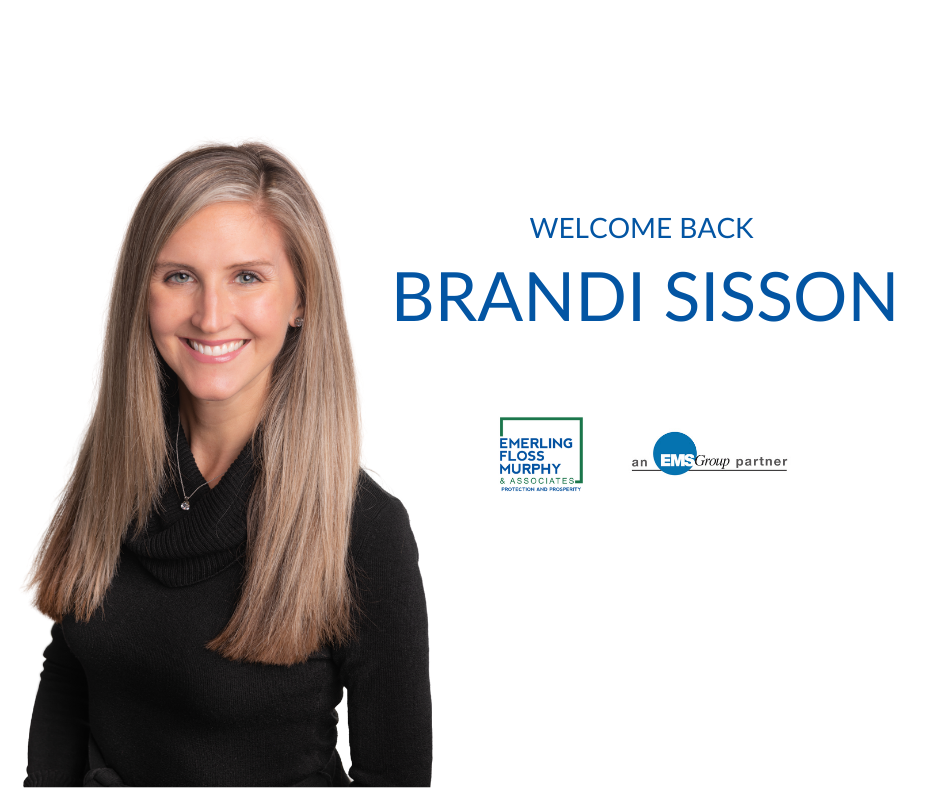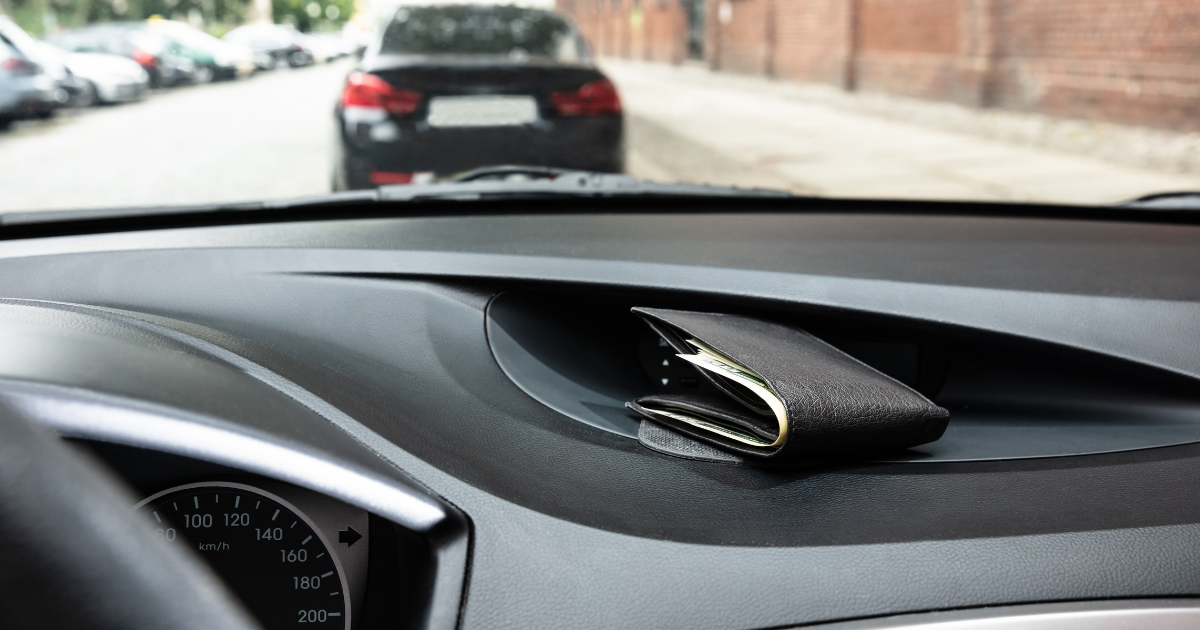10 Bad Habits That Aren’t Good for Your Car
Bad habits. We all have them. And sometimes, they can be hard to shake. This is especially true when it comes to driving. Depending on how many years you’ve spent behind the wheel, certain habits may be deeply ingrained by now. And many of them can be bad for your car.

DRIVING ON EMPTY
Whether you’re running late and forget to fill up, or you’re just not paying attention to your fuel gauge, finding yourself low on gas can happen from time to time. But running out of gas is more than just inconvenient; it can also be hard on your car.
Why? Because critical components, like your vehicle’s fuel pump, aren’t designed to operate without gas. The fuel pump is submerged in the gas tank, where it uses fuel to cool and lubricate the mechanisms in the pump. Most fuel pumps can last for the life of your vehicle.
But when you run your car on empty, the pump can overheat, which could lead to a costly failure. And because the gas tank typically needs to be drained and removed to replace the pump, this labor-intensive job could cost upward of $1,000 to repair.

DRIVING THROUGH DEEP WATER
If you approach any kind of flooding, including large puddles of groundwater, you may be tempted to drive right through. But your best—and safest—course of action is always to turn around and find another route. What may not seem like a lot of water can in fact be quite dangerous when you’re behind the wheel.
For starters, it can be hard to gauge how deep the water is, and you can’t see what debris or other hazards may be below the water.
On top of that, driving through deep water can damage or destroy your vehicle’s engine, transmission and other critical components. It can also cause irreversible damage to your car’s complex electrical system. Because of this long-lasting damage, a flooded vehicle is often considered a total loss by insurance providers.

DELAYING MAINTENANCE
Every vehicle manufacturer recommends following a routine maintenance schedule to keep your car running in tip-top shape. In the short term, it may seem like there’s no harm in skipping an oil change, air filter replacement or tire rotation. But the truth is, taking care of these preventative maintenance tasks now can save you from needing major repairs later.

IGNORING WARNING LIGHTS
Modern cars feature a host of warning lights, and each is there to notify you of a particular problem with your vehicle. Ignoring these warning lights could leave you with a major repair down the road. Depending on the problem, it could even jeopardize the safety of you and your passengers.
So don’t make a habit of ignoring your vehicle’s warning lights. The next time that “check engine” light starts flashing, consult your car’s manual and if need be, take your car to a qualified mechanic to get it checked out.

NOT CHECKING YOUR TIRE PRESSURE
One of the easiest car maintenance tasks to ignore is checking your tire pressure. After all, if your tire isn’t flat, what’s the big deal? But not running your tires at the manufacturer’s recommended air pressure can cause a host of problems ranging from premature or uneven tire wear to bad handling and poor fuel economy.
For that reason, experts recommend that you make a habit of checking your tire pressure once a month. And remember that when it’s cold, your tire pressure will drop between one and two pounds per square inch (PSI) for every ten-degree decrease in temperature. So pay extra attention to your tires as the seasons change.

RIDING THE BRAKES
Your car’s brakes represent one of its most important safety systems. But hitting the brake pedal too hard, or using the brakes too often, can leave this system severely compromised.
For example, applying the brakes for a prolonged period of time (like when slowing your car down a long hill) can cause them to overheat. And when your brakes get too hot, their stopping power is greatly reduced.
Overuse of your brakes can have long-term consequences, too. More braking means you’ll wear through pads and rotors faster, which translates to more frequent service intervals. You can also expect to pay more at the pump, thanks to lower fuel economy caused by frequent braking.
To “break” this bad habit, try to leave some extra space between you and other cars on the roadway. And if you’re descending a long hill, try shifting your car out of overdrive and into a lower gear; this will allow the engine to do some of the braking for you.

DRIVING TOO FAST OVER SPEED BUMPS
Speed bumps are installed to help slow down traffic, making areas safer for pedestrians. If you drive over a speed bump at a slow speed, your car will be unharmed. But hit a speed bump faster than about 10 miles per hour, and you can do serious damage to your car.
The sudden impact of a speed bump could cause your suspension to bottom out, damaging your shocks and struts. It could also bend other important suspension components or knock your car out of alignment. So take it slow!

LETTING YOUR CAR SIT FOR LONG PERIODS
Parking your car for extended periods of time can take its toll on your vehicle. The time it takes for your vehicle to be damaged by long-term storage will vary based on several factors, including the location of your parked car and how well you’ve prepared it.
However, the negative effects of time on an undriven vehicle can be observed sooner than you may think.
When your car is left undriven, the fuel and battery can go bad. Tires and rubber belts can crack. Rust can begin to form. And rodents could even make your car their new home.
If you have a college student away, for example, consider using a battery maintainer while the car sits. Since maintainers are used for maintenance during periods when cars aren’t going to be used, time isn’t of the essence when charging. This means that a maintainer can give a battery a “low and slow” charge, which is better for its health than a faster charge or a jump.

HITTING POTHOLES
If you live in an area that sees cold winters, the constant freeze-thaw cycles can make potholes a common sight on the roadways. When driving, you should do your best to avoid hitting them at all costs.
Potholes can cause damage to your vehicle ranging from flat tires or bent wheels to much pricier damage to your suspension, steering system or exhaust system. Next time you encounter a pothole, try to swerve around it. If swerving isn’t possible, reduce your speed to lessen the impact—and any potential damage.

NOT REGULARLY WASHING YOUR CAR
Everybody can appreciate how good a freshly washed car looks. But the benefits of a clean vehicle extend far beyond the visual appeal. If you go long periods of time without washing your car, all that dirt and grime will embed itself in the painted surfaces and will eventually eat away at the clear coat, causing permanent damage.
The consequences are even greater if you live in an area that uses road salt to melt the ice and snow. That’s because salt creates chemical reactions that can corrode the components on your car. This is especially true for any exposed metal, like brake lines and fuel lines.
Common Insurance Needs for Summer Months
Whether you plan to take the summer off or your business is entering one of its busiest seasons, both individuals and business owners must protect themselves against unforeseen hazards that arise when the weather gets warmer. There are common insurance needs in the summer months that should be considered in the interest of mitigating risk and protecting your business and other valued assets from costly damage or claims.

FLOOD INSURANCE
Summer storms can cause major flooding during the warmer months. Because standard homeowners’ insurance policies do not cover damage caused by flooding, one of the most popular insurance needs in the summer months is supplemental flood insurance.

LIABILITY INSURANCE
From swimming in pools to jumping on trampolines, outdoor play increases during the summer months and so does the risk of accidents. Taking safety precautions like never letting children swim or play unattended and building gates around these play areas are important. But it’s also essential to ensure adequate liability coverage or umbrella insurance as part of your homeowners’ policy in the event that something goes wrong.

SHORT-TERM & LONG-TERM RENTAL INSURANCE COVERAGE
If you plan to rent out your primary residence or vacation home this summer, you should consider added protection. Adding a rider to an existing insurance policy and purchasing a business or landlord policy are just some of the ways you can protect against claims related to property damage, personal property theft or damage, or other costly events when renting your property.

HULL INSURANCE
Hull insurance covers damage to any remote control models or drones. This can include recreational usage or business usage (such as drone photography). Additionally, On-Boarding Insurance would cover damage to anything these devices would be carrying (such as a camera).
You may also want coverage to protect yourself from liability, should your vehicle damage any person or property.
EFMA Welcomes Deb D’Anniballe
We are pleased to announce the hiring of Debra D’Anniballe as an Account Manager on our Commercial Lines Team.
Debra D’Anniballe joined Emerling Floss Murphy & Associates in May 2022.
She specializes in large commercial accounts, and brings with her 21 years of experience in the insurance industry. She is a member of The Institutes and has her CISR.
Deb graduated from Monticello High School and Bryant and Stratton College.
She resides in Lockport, NY with her two sons and her Boxer, and loves spending time doing “anything outdoors.”
How to Get Better Gas Mileage (And Other Questions About Fuel Economy)
If you’re looking for ways to tighten your monthly budget, there’s an unexpected place you can look: Your garage.
No, we’re not telling you to sell your car (although that’s certainly an option). Rather, it’s time to take a closer look at the way you drive and take care of your vehicle. As gas prices climb, both of these habits can make a bigger impact on your wallet than you think.
And if you’re looking for affordable car insurance, we can help with that, too.
WHAT IS GAS MILEAGE?
Gas mileage (also known as miles per gallon or MPG) is measured by calculating the number of miles that a vehicle can travel using a single gallon of fuel. Fuel economy is another term that’s commonly used. It’s often referred to in relation to improving fuel efficiency — which means using less gas when you drive.
HOW CAN I FIGURE OUT MY VEHICLE’S MPG?
Since 1977, auto manufacturers have been required to publish some form of miles per gallon metric on new car labels. For modern vehicles, this includes ratings for city, highway and combined MPG values.
In general, vehicles tout better gas mileage during highway driving rather than city (i.e. stop and start) driving. But the combined MPG rating, which represents 55% city driving and 45% highway driving, provides a quick and easy way to compare the fuel efficiency of gasoline vehicles — which is especially helpful if you’re shopping for a new car. You can find these values for your current vehicle through a quick internet search.
If you want to measure the real-world gas mileage of your car, it’s easier than you might think. Follow the steps below from the U.S. Department of Energy’s Office of Energy Efficiency & Renewable Energy:
- Step 1: Top off your tank. Fill your tank all the way up, then record the current mileage from your odometer (or set your odometer’s trip meter).
- Step 2: Run it out, then record your numbers again. Once it’s time to fill up again, record the new odometer reading as well as the number of gallons it took to refuel.
- Step 3: Subtract your readings. If you used the trip meter, you can skip this step. If not, put those elementary math skills to use and subtract your first odometer reading from your second to see how many miles you traveled on one tank.
- Step 4: Do a little division to determine your MPG. Take your figure from step three and divide the number of miles you drove by the number of gallons it took to fill your tank. Your final number is your MPG for that driving period.
WHAT’S CONSIDERED “GOOD” GAS MILEAGE?
Getting good gas mileage means that you can travel further using less gas.
As a general guide, the U.S. Environmental Protection Agency has designed a fuel economy rating that evaluates vehicles on a scale of 1 (worst) to 10 (best). These numbers can also be found on new car labels. For the 2020 model year, vehicles earning a 1 rating return an MPG of 14 or less, while a score of 10 requires 44 or more MPG.
But there are a lot of other variables that factor into this ‒ from the type of vehicle you drive to the way you drive it. And all of these can add up when it comes to how much you end up spending on gas.
WHAT CAUSES POOR GAS MILEAGE?
Regardless of what kind of vehicle you drive, all of these factors can negatively impact gas mileage:
- Speed: The faster you drive, the more fuel your vehicle burns up. This includes how fast you accelerate, too.
- Idling: Keeping your car on for it to warm up or cool down, queuing up at a drive-thru or waiting to pick your kid up from soccer practice can all decrease your vehicle’s fuel economy.
- Aerodynamic drag and excess weight: Driving too fast or traveling with a rooftop cargo carrier? These can increase wind resistance, which causes your vehicle to use more gas. And towing any kind of trailer or hauling too much in your trunk, bed or back seat also requires more fuel.
- Poor maintenance: From underinflated tires to an unattended engine issue, failure to consistently “tune-up” your vehicle can cost you a lot more at the pump. It also can create potential safety risks.
- Quick trips: A quick run to the supermarket on Monday. Stopping by the bank on Wednesday. While it may be convenient to run these errands one at a time, it can wreak havoc on your fuel economy. Quick, short trips like this from a “cold start” eat up fuel, because your engine needs to warm up before it can run efficiently.
HOW CAN I IMPROVE MY GAS MILEAGE?
The U.S. Department of Energy’s Office of Energy Efficiency & Renewable Energy and Consumer Reports offer several ways that you can improve your MPG:
- Drive more efficiently.
- Follow the speed limit, and drive sensibly ‒ not aggressively (e.g. quick accelerations, hard stops, etc.).
- On the highway, don’t speed up and slow down (unless you need to for safety). Once you get up to speed, stay there. Use cruise control when possible.
- Remove the unnecessary extra weight, avoid idling and take the cargo box off the roof of your vehicle (unless you really need to use it) to help even more.
- Keep your car in shape.
- Make sure your engine is tuned, keep tires properly inflated and use the right grade of motor oil.
- Plan and combine trips.
-
- Spend less time sitting in traffic by avoiding rush hour on daily commutes.
- Run all your errands on one day rather than taking multiple short trips during the week.
- If you have an especially long commute, ask your employer if you can work from home a day or two per week.
-
EFM&A Welcomes Back Brandi Sisson
After a three-year hiatus, Emerling Floss Murphy & Associates are excited to welcome back Brandi Sisson to the agency as a Personal Lines Account Manager.
Brandi was with the Emerling Agency prior to the merge for over eight years and left in 2018 to work for her family business.
Brandi was born and raised in Clarence, NY. She is working for us from her new residence in Melbourne, Florida, where she now resides!
19 Things You Should Never Leave In Your Car
Sometimes, it’s easy to feel like you’re living out of your car. You drive to and from work. Shuttle the kids around. Get groceries. Run errands… The list goes on.
With all this busyness, your car can become a catch-all for everything you need throughout the day. But using your car as temporary storage space is a bad habit to get into. Not only can it leave you susceptible to a car break-in, but extreme temperatures (both hot and cold) can be bad for your stuff, too.
To help you protect your vehicle (and the things inside it), here’s our list of 19 things you should never leave in your car.
- Electronics. Not only are expensive electronics an invitation to thieves – but the information they store is often more valuable than the device itself.
- Water bottles. On a hot day, the high temperatures in your car can cause chemicals from the plastic bottle to leach into the water. The biggest offender is bisphenol A (BPA), which has been linked to a range of health problems – including diabetes and cardiovascular disease.
- Medication. Did you know that fluctuating temperatures inside your car could impact the effectiveness of your prescription drugs? According to Baystate Health, most medicines should be stored at 59 to 77 degrees Fahrenheit in a cool, dry place. When your medications are stored outside that range in hot or freezing temperatures, the chemical properties of certain drugs can change, potentially making them less effective.
- Purse or wallet. Obviously, leaving a purse or wallet in a visible location can attract the wrong type of attention to your parked car. But even when stowed out of sight, it’s unwise to leave a purse or wallet in your car. Not only does it contain cash and credit cards, but a thief could also gain access to your driver’s license and other important personal data.
- Important documents. Speaking of personal data, any documents or forms that contain sensitive information should never be left in your car. That includes things like tax forms, financial statements, school transcripts or your passport. Information from these documents could be used by a thief to commit fraud or identity theft.
- Wine. Wine enthusiasts go to great lengths to store their vino at the perfect temperature and humidity. Leaving a bottle of wine in a hot car is pretty much the exact opposite of that. Not only can extreme heat produce off-flavors in the wine, but heat can also cause the air in the bottle to expand – pushing out the cork enough to contaminate the liquid inside.
- Canned beverages. Extreme hot and cold temperatures could cause the cans to explode. And trust us – your car will never be the same after cleaning up the sticky aftermath of that soda bomb.
- Pets. This one should be obvious, but it’s still worth mentioning. Never leave your pet alone inside a parked car. Time passes faster than you realize, and on a hot day, car temperatures can quickly climb to well over 115 degrees Fahrenheit, putting your pet’s life in danger.
- Groceries. According to the U.S. Department of Agriculture (USDA), refrigerated foods should never be left out for more than two hours. And if the temperature is above 90 degrees Fahrenheit, that time is reduced to one hour. Leaving perishable food in your car beyond these limits can promote the spread of harmful bacteria. The takeaway: On a hot day, keep your food safe by heading straight home after your trip to the grocery store.
- Aerosol cans. A hot car is no place to leave an aerosol can. Whether it’s spray paint, deodorant, hairspray or a household cleaner, these pressurized cans can explode in temperatures above 120 F – which is definitely possible to achieve inside your car on a warm summer day.
- Lighters. Similar to aerosol cans, cigarette lighters can also leak or explode in high temperatures. The resulting explosion could even start a fire.
- Plants. Leaving a plant inside your car for too long can lead to dehydration. And fluctuating temperatures can stress – or even kill – the hardiest houseplants.
- Art supplies. If you’re a parent, you’ve likely experienced the joy of scraping melted crayons off a car seat. It doesn’t take much heat for art supplies like crayons and pastels to soften and melt – leaving a colorful mess in their wake.
- Cosmetics. You’ve invested a lot of money in that bag of makeup. So don’t ruin it by leaving it in your car. Just like crayons, that new lipstick can also melt into a waxy puddle in your hot car. And other cosmetics, like mascara, can become unusable if they freeze – even after they thaw back out.
- Cash. Leaving cash visible in your car is asking for trouble. Even if it’s only a few dollars, or some spare change in the cupholder, you may be surprised how little it takes to convince a would-be thief to break your car window.
- Musical instruments. Storing a wooden instrument, like a guitar or violin, in your car could result in permanent damage. That’s because rapid changes in temperature and humidity can cause the delicate wood used in the instrument to warp, crack or split.
- Glasses. Did you know high and low temperatures can affect the frames of your glasses and sunglasses? In a hot car, plastic frames can warp and bend. And when it’s freezing out, the plastic can become brittle – making it easier to accidentally break them.
- Sunscreen. It’s nice to have some sunblock handy at a moment’s notice. But keeping your bottle of sunscreen in a hot car can cause the protective chemicals to break down – reducing its effectiveness.
- Batteries. Extreme temperatures aren’t good for batteries, either. High temperatures can cause your sealed batteries to leak. And low temperatures can reduce the energy storage capacity of a battery.
WE’VE GOT YOUR BACK
Life is full of unexpected moments. When something you value has been damaged or lost, filing an auto insurance claim shouldn’t add to the stress.
Using Benefits to Grow and Retain Top talent
Using Benefits to Grow and Retain Top talent
The job market is unusual right now, to say the least. Finding reliable, qualified and quality talent has been a major issue for many of our clients. There is no easy answer as to why this is happening, especially since it seems to be across many different industries. However, we know that strong recruitment efforts have some consistencies:
- Aggressive pay wage.
- Positive organizational culture.
- Strong employee benefits.
This is where we can come in and help.
Emerling Floss Murphy & Associates has substantially grown throughout the past year, especially as businesses have adjusted their portfolios to attract and maintain employees.
We serve as an intermediary between businesses and several Group Benefits Companies, helping match plans that best suit the needs. Our clientele ranges from businesses with less than five employees, to large corporations with thousands of employees. Our Group Benefits team has specialists that cover this range, along with a strong support team that ensures a streamlined rollout to all employees.
A program customized for both the business and employees
Employee benefits play an important role in employees’ and their families’ lives and have a significant financial and administrative impact on a business organization. Our goal is to establish a long-term relationship focused on bringing a combination of benefits to attract and retain top talent while also balancing the increasing cost of benefits.
Emerling Floss Murphy & Associates serves as an intermediary between your company and multiple Insurance Companies.
We provide industry knowledge, tools, and support to create a benefits package that aligns with your corporate goals. We also assist you and your employees with successfully navigating the world of employee benefits.
We are committed to helping you find the best-suited options to fit you and your employee’s needs. Combined, we offer 200 years of experience and expertise to provide you with the best solution for protection and prosperity. We believe you cannot have one without the other.
All About Hiring Your First Employee
You’ve put in the hard work building your business from the ground up. And it’s finally starting to pay off. The only problem: now you have more work than you can handle.
As a small business owner, growth is always a good problem to have. But it does come with its own share of challenges. If you’ve made it to this point, you have two options. The first is to let opportunities for new business pass you by, ensuring you don’t take on more than you can handle. The second option is to lighten your load – by hiring someone to help.
For many business owners, the decision to hire their first employee can be a difficult one. So here are answers to some of the most common questions about hiring your first employee.
You’ve worked hard to build and grow your business. We can help protect it.
SHOULD I HIRE AN EMPLOYEE OR CONTRACTOR?
If you need help building your business, there are two ways to hire an extra set of hands – adding an employee or signing an independent contractor. While there are pros and cons to both, it’s important to understand the difference.
- Employee: An employee is hired to work for your company on a full- or part-time basis. This means you, as the employer, have control over how, when, and where they do their job. And you’ll also have ownership of any work product that’s created on company time. However, this control comes with added responsibility. When you hire an employee, you’ll need to withhold payroll taxes and report their income using the appropriate tax form, in addition to abiding by other federal, state, and local employment laws. Then, there are additional benefit considerations – like offering vacation, sick time, a retirement plan, and health insurance. These are just some of the basic responsibilities that are tied to having employees.
- Independent contractor: A contractor (or freelancer) is a self-employed worker that is hired for a specific task. According to the Internal Revenue Service (IRS), that means the payer only has the right to direct the result of the work – not how, when, or where it’s accomplished. Contractors can also perform work for multiple clients at the same time. When hiring a contractor, you still need to report their income using the appropriate tax form. But because they’re responsible for their own taxes and benefits, you generally don’t need to withhold any payroll taxes.
Contractors can be a great option for short-term, project-based jobs. They can bring a specific skill to the table, without the long-term commitment of hiring an employee.
On the other hand, an employee will give you far more control over the work being performed – and the nature of the arrangement means they’re also likely to be more committed to your business. In the long run, this may make hiring an employee worth the extra time and financial investment, depending on the work that needs to be done.
WHEN IS THE RIGHT TIME TO HIRE AN EMPLOYEE?
Every business is unique. So, unfortunately, there’s no right answer to when it’s the best time to hire an employee. Instead, you’ll need to find the right balance for your situation.
- Too early: The biggest challenge to hiring your first employee is typically a financial one. Hire someone too early and you’ll run the risk of encountering cash-flow problems. Or if you don’t have enough work to support another team member, you could be paying someone who doesn’t have enough to keep them busy.
- Too late: However, if you start hiring too late, you may miss out on opportunities to grow your business. Or you could get in over your head and risk disappointing your current customer base.
Either scenario is less than ideal. That’s why it’s important to plan ahead.
Decide in advance when it’s a good time to bring on an employee – like when you hit a certain sales goal, or at a time when an employee can perform work that will significantly increase your revenue. If you need help before hitting that milestone, you can always hire a contractor to test the waters.
WHAT CHANGES DO I NEED TO MAKE TO MY BUSINESS BEFORE HIRING AN EMPLOYEE?
One big obstacle to hiring your first employee can be the logistics. The truth is, hiring an employee means you’ll have a lot more legal rules to follow1. If you have specific questions about your business, always talk to an experienced lawyer for legal advice.
Generally speaking, though: Before you make your first job offer, you may need to:
- File for a federal employer identification number (EIN). If you don’t have one already, this number will be used for tax documents that are submitted to the IRS.
- Register with the state. Depending on where you live, you may need a separate tax ID number for your state. You may also need to pay your state’s unemployment compensation tax, which is used to support workers if they lose their job.
- Set up your payroll. Whether you decide to manage payroll on your own or work with an outside firm, you’ll need to set up regular pay periods. Generally, employers withhold state and federal taxes based on the information completed in your employee’s W-4 form.
- Display required notices. You may be a small business. But as an employer, you’re now subject to many federal, state, and local labor laws. And depending on your industry, that may require displaying certain notices or posters for your employees to see.
- Create an employee handbook. This step may seem like overkill for your first employee. But if you don’t have any policies in place for your staff to follow, you may be left defenseless against future bad behavior.
- Prepare your onboarding process. Before making your first hire, it’s wise to think through how you’ll train your employees. Developing an onboarding process in advance can help your new hire get up to speed faster and eliminate any frustrations caused by a lack of direction.
HOW DO I FIND THE RIGHT CANDIDATE FOR THE JOB?
Your first hire will likely have a significant impact on the future of your business – good or bad. That’s why it’s critical to find the right person to fill the job. With reports of record labor shortages in the news, many businesses are finding it harder than ever to hire qualified workers. Here are some tips that may help.
- Understand hiring laws. When hiring, keep in mind that there are questions that you can’t (or shouldn’t) ask. To avoid being discriminatory in your hiring decision, steer clear of asking about topics such as a candidate’s age, religion, disability, marital status, race, or any other protected characteristic. If you have specific questions, it’s best to consult a lawyer for legal advice tailored to your business or situation.
- Write a compelling job description. When writing a job description, make sure it clearly describes the work that will be performed, as well as any qualifications you expect from applicants. Be practical. Have realistic expectations. And don’t forget to explain why it will be great working for your growing company – including any perks of the job. Then, post your listing to online job sites like Indeed, Monster.com and LinkedIn.
- Consider a benefits package. With so many job opportunities available right now, an offer with competitive pay and benefits can help attract top talent. Do your research in advance to determine what the average compensation is for similar roles in your area.
- Use your network. For businesses with fewer than 100 employees, it’s estimated that about half of all new hires are generated by referrals. So be sure to use your personal network to your advantage. Let your friends, family and professional contacts know you’re hiring and ask if they know anyone that would be a good fit. And don’t ignore the power of social media platforms like Facebook, Twitter and LinkedIn.
- Prepare for the interview. Once you’ve narrowed down the field of candidates, it’s time to conduct interviews. Be sure to prepare your questions ahead of time and make a list of the attributes you’re looking for. This will make it easier to compare applicants. Experts also recommend asking situational questions to gauge how someone may respond to real-life scenarios.
WHAT SHOULD I DO DURING THE HIRING PROCESS?
After you’ve found the perfect candidate, it’s time to make an offer and set a start date. But of course, it’s not quite that easy. Here are some steps you should take to protect your business and ensure a smooth hiring process.
- Fact-check their resume. A resume is a great starting point to learn about someone’s background and experience, but it won’t tell you everything. Consider following up with previous employers or alma maters to make sure a candidate’s skills and experience check out. Be aware that many employers have a standard practice of not providing details on a former employee; only dates of employment and/or whether or not the individual would be considered “eligible for rehire.”
- Conduct a pre-employment screening. Your first employee may have access to everything from important files to financial records. So you’ll want to make sure they can be trusted. Consider paying for a background check and drug screen to check for any signs of past criminal conduct or substance abuse. Be aware of all federal, state, and local laws that might impact background checks (including credit checks) and drug testing. Consider doing background checks and/or drug testing after a conditional offer is made.
- Write an offer letter. Next, write up the details of your job offer and submit it to your soon-to-be employee. This should include information on the position, salary and any benefits you’re offering. The offer will serve as the foundation from which any negotiations start. The offer letter is an important document. It’s a good idea to discuss it with or have it reviewed by legal counsel in advance. As mentioned above, consider having a first conditional offer letter, pending successful background checks and/or drug testing. Then follow up with a final offer letter, once the background check and/or drug testing have been successfully completed.
- Be prepared to negotiate. Applicants are likely to try and negotiate for higher pay or benefits. Be prepared in advance for any compromises you’re willing to make. And if you can’t budge on salary, consider offering other incentives like vacation time or training opportunities.
- Complete your paperwork. Congratulations! Your offer has been accepted and your new employee is ready to start. Now it’s time to get working on all the forms required by the U.S. Department of Labor. Be sure to keep copies of everything for your own records.
HOW CAN I PROTECT MY GROWING BUSINESS?
You may have started as a one-person show. But now that your business is expanding, you’ll need to make sure it’s protected.
An insurance pro can help you understand what coverage to consider when you hire new employees. Generally speaking, here are a few things to have on your radar:
- Business Insurance: Business insurance can help protect against everything from property damage to liability claims from customers and employees.
- Workers’ Compensation: Workers’ compensation laws and requirements vary by state. But generally, any business that has employees must have workers’ compensation insurance coverage. It helps cover medical care and lost wages for an employee who is hurt at work.
- Employment Practices Liability (EPL): Unfortunately, no employer is immune from a current or former employee, or even an employment candidate, filing a claim of alleged discrimination, wrongful termination, or harassment of any kind. If a claim against your business is made, you could spend valuable time and resources defending it – even if the claim is determined to be meritless.
YOU BUILT IT. LET US HELP PROTECT IT.
They say “Rome wasn’t built in a day.” And neither was your business. EFM&A appreciates all the hard work that goes into starting and running a small business. It’s why we’ve dedicated our lives to helping you protect it.


